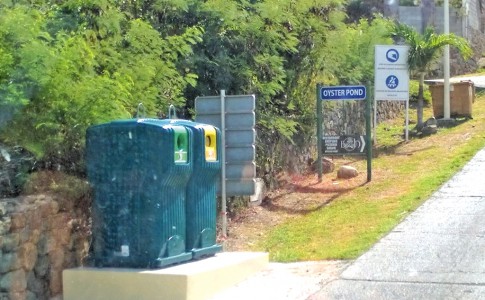In the middle of the week, the team from the National Nature Reserve of Saint-Martin went to the beach of Anse Marcel to note the presence of a trace of turtle egg-laying activity dating from the previous night.
Sea turtle nesting season is well and truly in its active phase. Indeed, sea turtles come to lay eggs on the beaches of Saint-Martin each year from March to November with a peak of activity between the months of July and September. This year is no exception to the rule. Following a report from a citizen, the Saint-Martin Nature Reserve discovered that a sea turtle was busy at Anse Marcel. The trace found in the early morning once again confirms the status of Anse Marcel beach as a nesting site, with this female hawksbill turtle. The track of the latter is recognizable by its narrowness (50 cm), its asymmetry (one leg after the other) and the search for vegetation at the top of the beach to install its nest there, unlike the two other species also laying eggs in Saint -Martin.
When the Nature Reserve team read this trace, this spawning activity unfortunately ended in failure and the female returned to the sea without being able to lay her eggs. She will certainly try her luck again in the days to come on this same beach or a close one. In this critical period for the conservation of these emblematic marine species, the Saint-Martin Nature Reserve urges everyone to respect the calm and cleanliness of the beaches hosting their eggs. It should be remembered that these species are protected, as are their essential habitats and that any disturbance or intentional attack is liable to prosecution. This beautiful discovery that occurred at Anse Marcel deserves to draw the attention of all users and managers of coastal sites to the good practices guaranteeing that these sensitive and protected species continue to frequent our waters and beaches. It is therefore important to take care to leave free access to the beaches and the vegetation of the upper beaches; not to store anything in these egg-laying areas, which already host or may soon host nests; not to modify the nature and composition of the soil in these areas; not to alter the vegetation; to limit noise and light pollution there and more particularly at night, a period more favorable to the laying of sea turtles; not to let pets roam unsupervised on the beaches (dog on a leash). The world conservation status of sea turtles calls for the greatest caution, so that tomorrow we can continue to have a chance to observe them freely. In 2021, 475 patrols were carried out, including 171 by the Nature Reserve and 304 by volunteers.
Thanks to these patrols on the beaches of the French part of the island, 226 traces of climbing were noted, including 192 of green turtles. _VX
7,604 total views















No comments